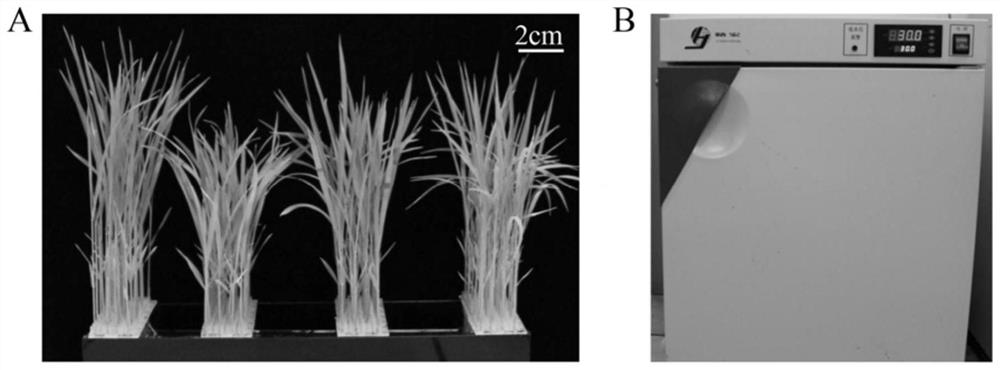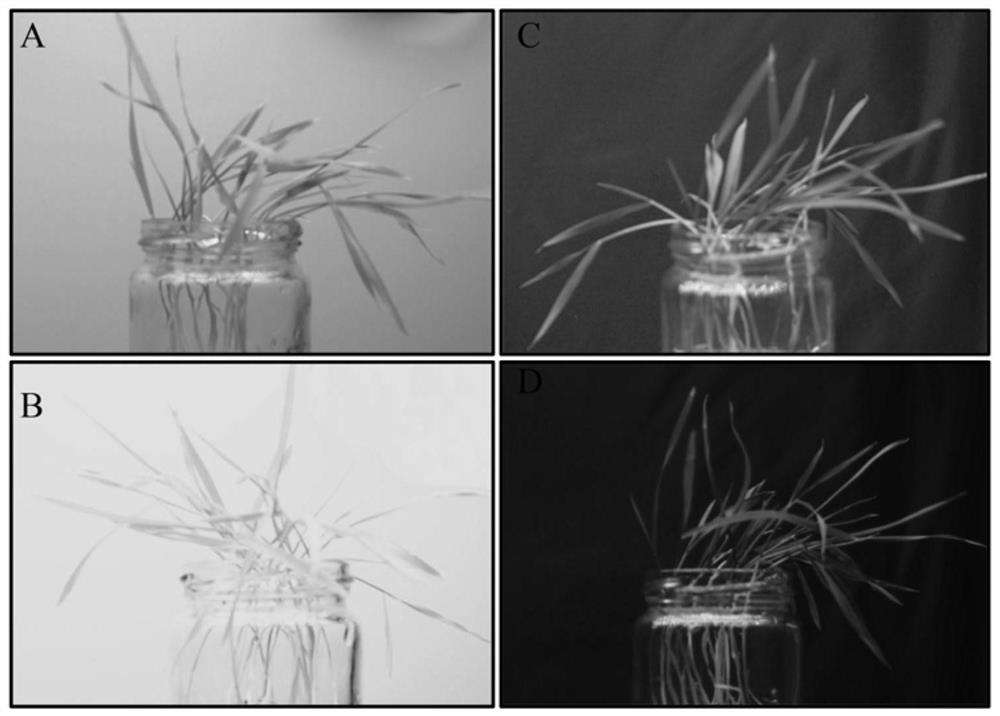A method for detecting the distribution of chloroplasts in rice leaves after light treatment
A light treatment and rice technology, applied in the field of plant light signal research, can solve the problem of difficult observation of rice leaves, and achieve the effect of clear observation results and simple operation process.
- Summary
- Abstract
- Description
- Claims
- Application Information
AI Technical Summary
Problems solved by technology
Method used
Image
Examples
Embodiment 1
[0047] 1. Cultivation of rice seedlings
[0048] 1) Pick out the plump seeds from the harvested seeds, put them in a plate, add pure water, it is better to have no seeds, such as figure 1 A-B are shown.
[0049] 2) Place the plate at 30°C for 2-3 days to accelerate germination. Change the pure water every morning and evening, pay attention to the germination, if figure 1 C shown.
[0050] 3) When the seeds germinate and sow in the PCR plate, the PCR plate cuts off the bottom of each well before sowing. The sowing density should not be too high, and one seed is sown in 3 holes to prevent the growth from being affected by excessive close planting.
[0051] 4) After the sowing is completed, first cultivate in water for 3 days to prevent the flooding of green algae caused by over-nutrition, and then replace it with rice culture medium for cultivation, and change it once a week to ensure that the culture medium is sufficient every day, and continue to cultivate for 2 weeks. The ...
PUM
 Login to View More
Login to View More Abstract
Description
Claims
Application Information
 Login to View More
Login to View More - R&D
- Intellectual Property
- Life Sciences
- Materials
- Tech Scout
- Unparalleled Data Quality
- Higher Quality Content
- 60% Fewer Hallucinations
Browse by: Latest US Patents, China's latest patents, Technical Efficacy Thesaurus, Application Domain, Technology Topic, Popular Technical Reports.
© 2025 PatSnap. All rights reserved.Legal|Privacy policy|Modern Slavery Act Transparency Statement|Sitemap|About US| Contact US: help@patsnap.com



